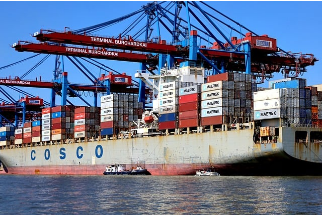Shipping container homes have emerged as a unique and innovative solution in the housing market, captivating the imagination of architects, environmentalists, and homeowners alike. These homes, constructed from repurposed steel shipping containers, offer a blend of modern design, affordability, and sustainability. As urban areas grapple with housing shortages and environmental concerns, shipping container homes present a compelling alternative. This article explores the rise of shipping container homes, their benefits, the construction process, challenges, and the future of this growing trend.
The Concept of Shipping Container Homes
Shipping containers, typically used for transporting goods across the globe, are robust, modular, and standardized. Made from high-strength steel, they are designed to withstand harsh conditions at sea. The idea of repurposing these containers for housing originated as a creative response to several global challenges, including:
- Urbanization and Housing Shortages: With rapid urbanization, many cities face a shortage of affordable housing. Shipping container homes provide a quick and cost-effective solution.
- Sustainability: The construction industry significantly contributes to carbon emissions and waste. Using recycled materials like shipping containers can reduce the environmental footprint of building new homes.
- Disaster Relief and Temporary Housing: Shipping container homes can be quickly deployed and assembled, making them ideal for emergency housing in disaster-stricken areas.
Benefits of Shipping Container Homes
1. Affordability
One of the most attractive features of shipping container homes is their cost-effectiveness. Compared to traditional building methods, constructing a home from used shipping containers can be significantly cheaper. The cost savings arise from several factors:
- Material Cost: Shipping containers are relatively inexpensive, especially when purchased second-hand.
- Labor Cost: The modular nature of containers reduces construction time and labor costs. Since containers are prefabricated structures, they require less on-site work.
- Foundation and Infrastructure: Shipping container homes can often be built with simpler foundations, reducing costs further.
2. Sustainability and Eco-Friendliness
The environmental benefits of shipping container homes are substantial. By repurposing decommissioned containers, the demand for new construction materials is reduced, conserving natural resources and minimizing waste. Additionally:
- Reduction in Carbon Footprint: The steel used in shipping containers has already been produced, so repurposing it avoids the need for new steel production, which is energy-intensive.
- Recycling: Shipping container homes encourage the recycling of materials, promoting a circular economy.
- Energy Efficiency: With proper insulation and design, shipping container homes can be highly energy-efficient, reducing heating and cooling costs.
3. Durability and Strength
Shipping containers are built to be strong and durable, capable of withstanding extreme weather conditions. This inherent strength makes them an excellent choice for building homes, especially in areas prone to natural disasters. The steel structure provides a robust framework, and with proper treatment, these homes can have a long lifespan.
4. Versatility and Customization
Shipping container home offer a high degree of design flexibility. Containers can be stacked, arranged, and modified to create a variety of architectural styles, from simple, minimalist designs to elaborate, multi-story structures. This versatility allows for creative expression and customization, enabling homeowners to design unique living spaces that meet their specific needs.
The Construction Process of Shipping Container Homes
The process of building a shipping container home involves several key steps, from initial planning to final construction. Here’s an overview of the typical construction process:
1. Design and Planning
The first step in constructing a shipping container home is designing the layout and structure. This involves determining the number of containers needed, their configuration, and the overall design aesthetic. Architects and designers work closely with clients to create blueprints that reflect their vision while considering practical aspects such as space utilization, ventilation, and insulation.
2. Site Preparation and Foundation
Once the design is finalized, the construction site is prepared. This includes clearing the land, leveling the ground, and laying the foundation. The type of foundation used can vary depending on the site and the design of the home. Common options include concrete slabs, piers, or footings.
3. Container Modification
The next step involves modifying the shipping containers to suit the design. This process may include cutting openings for windows and doors, reinforcing structural elements, and applying insulation. Containers are typically insulated from the inside to ensure thermal efficiency and comfort.
4. Assembly and Installation
After modification, the containers are transported to the site and placed on the foundation. They are then secured and welded together, creating a solid structure. This phase also includes the installation of plumbing, electrical systems, and HVAC (heating, ventilation, and air conditioning) systems.
5. Interior and Exterior Finishing
The final phase involves finishing the interior and exterior of the home. This includes installing flooring, wall finishes, cabinetry, fixtures, and appliances. The exterior may be treated with protective coatings to prevent rust and corrosion and can be clad with various materials for aesthetic appeal.
6. Inspection and Certification
Once construction is complete, the home must undergo inspection to ensure it meets building codes and safety standards. Certification may be required depending on local regulations, particularly if the home is intended for permanent residence.
Challenges and Considerations
While shipping container homes offer numerous advantages, they also come with unique challenges and considerations:
1. Zoning and Building Codes
One of the primary challenges in constructing a shipping container home is navigating zoning laws and building codes. These regulations vary widely depending on the location and can impact where and how container homes can be built. In some areas, local governments may have restrictions on the use of shipping containers for residential purposes.
2. Insulation and Thermal Comfort
Shipping containers are made of steel, which conducts heat and cold. Without proper insulation, these homes can become extremely hot in the summer and cold in the winter. It is essential to use high-quality insulation materials and techniques to maintain a comfortable living environment.
3. Structural Modifications
Modifying shipping containers can be challenging and requires specialized skills. Cutting large openings for windows or doors can weaken the structural integrity of the container, necessitating reinforcement. It’s crucial to work with experienced professionals to ensure that modifications are safe and compliant with building codes.
4. Corrosion and Rust
Steel containers are susceptible to rust and corrosion, especially in humid or coastal environments. Proper treatment and maintenance are necessary to protect the structure from deterioration. This may include applying rust-resistant coatings and regularly inspecting and repairing any damage.
5. Financing and Insurance
Securing financing and insurance for shipping container homes can be more complex than for traditional homes. Lenders and insurers may be hesitant due to the unconventional nature of these homes and potential concerns about resale value. However, as container homes become more popular and accepted, financing and insurance options are becoming more available.
The Future of Shipping Container Homes
The future of shipping container homes looks promising, as they continue to gain popularity for their affordability, sustainability, and unique design potential. Several trends are likely to shape the future of this housing option:
1. Increased Acceptance and Integration
As more people embrace alternative housing solutions, shipping container homes are becoming increasingly accepted in mainstream real estate markets. This acceptance is likely to lead to more favorable zoning laws, building codes, and financing options, making it easier for people to build and live in these homes.
2. Technological Advancements
Advancements in construction technology, such as 3D printing and smart home systems, are likely to enhance the design and functionality of shipping container homes. These technologies can streamline the construction process, improve energy efficiency, and provide greater customization options.
3. Eco-Friendly Innovations
As sustainability becomes a priority for many homeowners, shipping container homes are expected to incorporate more eco-friendly features. This includes using renewable energy sources, sustainable building materials, and green technologies like rainwater harvesting and solar panels.
4. Expansion into New Markets
While shipping container homes are already popular in urban areas and among eco-conscious consumers, they are likely to expand into new markets, including rural and suburban areas. They also hold potential for use in commercial and public projects, such as offices, schools, and community centers.
Conclusion
Shipping container homes represent a creative and sustainable solution to the challenges facing the housing industry. They offer an affordable, durable, and customizable alternative to traditional housing, with significant environmental benefits. Despite the challenges of building and living in a container home, the trend is growing as more people seek unique, eco-friendly, and cost-effective housing options.
As the market evolves and technology advances, shipping container homes are poised to become a mainstream housing option, offering innovative solutions to meet the diverse needs of modern living. Whether for personal residences, emergency shelters, or commercial spaces, shipping container homes embody the spirit of innovation and sustainability in architecture and housing.







